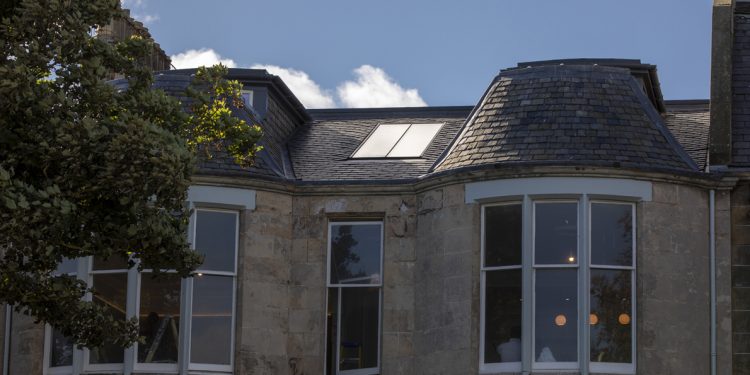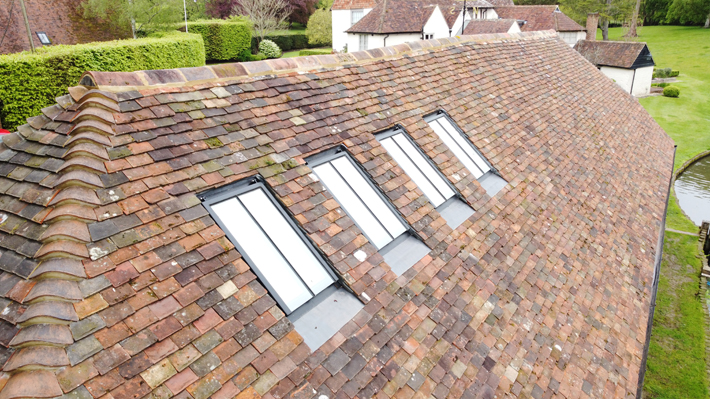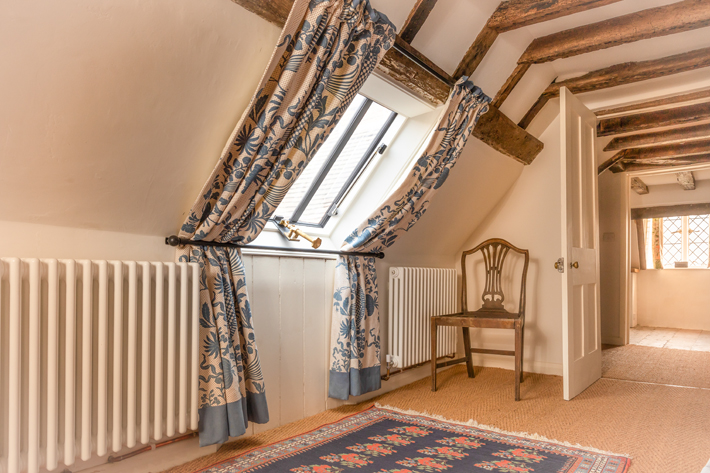A Guide to Conservation Rooflights

There’s a huge variety of choice in the conservation rooflight market and selecting the right product can be confusing. Paul Trace from Stella Rooflight offers some advice on things to consider when planning your project.
What is a conservation rooflight?
Although rooflights, or skylights as they are sometimes known as, have been around for centuries they became more prominent during the Victorian era as technology and building aspirations were stretched and roof glazing boomed. One of the most famous Victorian building projects was the Crystal Palace, which in 1851 used glazing on an unprecedented scale to showcase just what could be achieved.
Mass-produced Victorian rooflights for residential use tended to be made from cast iron and the earliest examples would have smaller, lighter panes of glass. This was partially down to limits of glass technology at the time but also because of excise duties, which were imposed on glass by weight in the mid-18th century. These slim, single glazed rooflights with multiple panels of glass were unobtrusive in design and sat flush in the roof. Today it is this minimalist appearance that many people are seeking to achieve in their glazing designs.
As a result of their popularity, there are lots of conservation roof windows on the market, which can make choosing the right one difficult unless one can identify what the differentiations are. An effective way to make this distinction is to look closer at the attributes of a true replica of a Victorian conservation rooflight.
What material is a conservation rooflight manufactured from?
If a conservation rooflight is all frame, then there is little point in having one. Genuine conservation designs should be manufactured with slim clean lines and a low-profile to match the roofline. A number of skylight companies try to produce conservation rooflights using modern bulky aluminium profiles, which sit proud of the roofline, particularly slate. It is widely accepted that the most authentic conservation rooflights are manufactured from steel because it provides great strength while offering a slim profile and excellent glass to frame ratios. There are many types of steel conservation rooflights and for unrivalled protection and lifespan, it is best to opt for a rooflight manufactured from a marine grade 316L stainless steel.
Considering the inside of the rooflight is also important, and again, it will come as no surprise that there are various options available. Nowadays most rooflight suppliers tend to use cheaper soft wood or plastic, which is painted white as an internal finish and these liners can result in deeper frame profiles or reduced viewable areas. While a white internal frame can be sold as ‘clean’ or ‘neat’, these can sometimes feel a little soulless and is a finish more often associated with modern flat rooflights than traditional conservation products.
High end conservation rooflight products will be finished with hard wood, which gives a neat, warm appearance to the internal element of your conservation rooflight. Some rooflight manufacturers even offer a choice of your timber preference, so that you can match other materials in your home or simply create the exact look you are trying to achieve.
Single or double glazed?
Victorian rooflights would have been single glazed, however, today’s modern building standards are much higher and so single glazing does not meet the minimum requirements for thermal efficiency (Part L). Double glazing is now the most popular option for genuine conservation rooflights because glazing technology is such that a modern double glazed unit can provide a number of benefits while remaining reasonably slender. While offering much improved thermal performance, modern glazing units can offer a variety of practical choices, such as self-clean, solar control UV light protection.
Some conservation rooflight suppliers are keen to boast about offering triple glazing in their products, however, while this does offer a slightly improved thermal performance it comes at the expense of appearance. The optimal spacer bar thickness is 16mm so any decent triple glazed unit is going to be almost 50% thicker than a double glazed version. Now with a flush fitting profile being one of the main requirements of a conservation rooflight, the introduction of triple glazing makes that almost impossible on some roof types. It is also important to consider that triple glazing will add significant weight to the rooflight, so consideration must be given to the load bearing structure of the roof and how you will position the rooflight for installation.
Should conservation rooflights have glazing bars?
It is often a stipulation from the Conservation Officer that a conservation rooflight should have a glazing bar to replicate that original Victorian appearance. It is not always the case but it is definitely worth checking whether you need them before purchasing any conservation rooflight.
If your conservation rooflight does require a glazing bar then it should be a genuine one. This is an area that separates those producing close replicas to the original Victorian rooflights and those who are trying to pass off modern skylights as something more traditional. A genuine glazing bar should be something which not only divides the glazing but also provides additional strength to the casement. So many conservation rooflights have something simply stuck or glued onto the outside of the glass which neither looks good nor provides any benefit to the rooflight. In addition, these stuck on bars (usually plastic) often attract dirt and mould and the lifespan of anything which is simply held on by tape or glue is unlikely to compare with a genuine steel glazing bar. A stuck on glazing bar is one step up from a felt pen but certainly should not be seen as a way to make a modern bulky framed profile meet the criteria of a conservation rooflight.
Top hung or centre pivot?
Once again, if you are looking for a close replica of a Victorian rooflight then a top hung profile will be the one you should opt for. Not only does a top hung design offer a more authentic appearance, it maximises the space below because the casement doesn’t stick into the room. Smaller top hung rooflights also utilise beautiful brass ironmongery to operate the casement whereas centre pivot designs tend to rely on modern plastic handles, which are out of reach and offer nothing to enhance the internal aesthetics.
Is any old conservation rooflight suitable for my project?
Just because something is sold as a conservation rooflight, that doesn’t automatically make it suitable for all building types. If your building is Listed or in a conservation area then the criteria for using conservation rooflights are much stricter and you should always gain approval, not only for their use but also the manufacturer that you would want to use.
There are only a handful of companies that specifically make conservation rooflights and even fewer who design, manufacture and assemble in the UK. Many conservation rooflights available online are simply other products which have been spruced up to look like they meet the requirements of that type of product. If you ask a supplier what the main difference is between their conservation rooflight and those used on modern buildings and the answer is a stuck on glazing bar, then you should avoid at all costs. Likewise, there are many elements which go into a genuine conservation design and price is always a reflection on quality.
Is there anything else I should consider when choosing my conservation rooflight?
With the UK Government pursuing a carbon neutral environment it is imperative that every action is taken to reduce energy consumption. Rooflights are energy efficient as they let in large amounts of natural light thus reducing the need for artificial lighting. Bringing natural daylight into your home is about much more than creating a bright, welcoming environment, it’s about protecting your health and wellbeing and achieving a more positive way of life.
One way to ensure that you maximise the amount of available light is to increase the size of your rooflights… or is it? Just because you have a large rooflight this does not always guarantee lots of light and you should always check what the finished viewable (often referred to as clear viewable) area of the rooflight will be. You might think that a conservation rooflight with a whole frame size of 900mm (w) x 1200mm (h) would have a similar clear viewable area regardless of the manufacturer, but you would be wrong and bulky framed modern types or the flat rooflights posing as pitched conservation styles will let in considerably less light than a genuine steel framed version.
With so many choices available, choosing the right conservation rooflight can be a bit of a minefield but with the right guidance and advice it need not be a stressful experience.
For further information or to discuss your conservation rooflight requirement contact the Stella Rooflight team on 01794 745445 or email info@stellarooflight.co.uk
https://stellarooflight.co.uk/conservation-rooflights/











